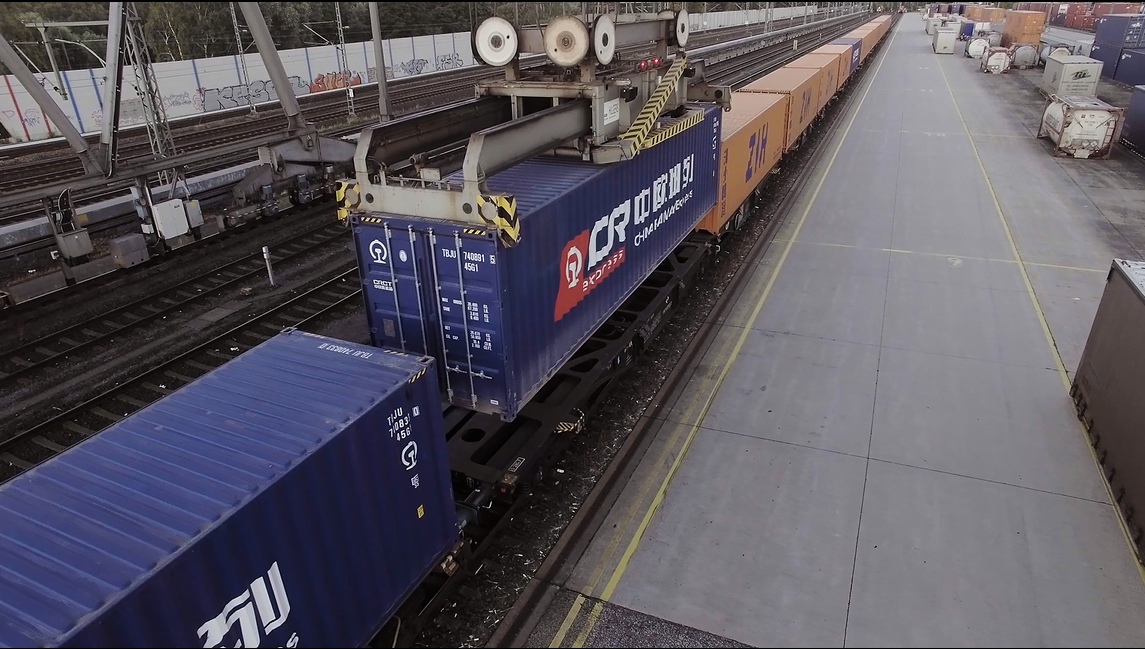Speeding China Railway Express
The China Railway Express is known as the “steel camel caravan” speeding along the “Belt and Road”.
Since the first China-Europe Railway Express (Chongqing-Duisburg) successfully opened on March 19, 2011, this year has exceeded 11 years of operation history.
At present, the China-Europe Railway Express has formed three large transportation channels in the west, the middle and the east, opened up 82 operating routes, and reached 204 cities in 24 European countries. More than 60,000 trains have been operated in total, and the total value of transported goods has exceeded 290 billion U.S. dollars. The backbone mode of land transportation in international logistics.
It has played an important role in promoting economic and trade exchanges between Asian and European countries and stimulating regional economic and social development.
The three main channels of China Railway Express are:
① West Passage
The first is to leave the country from the Alashankou (Horgos) port in Xinjiang, connect with the Russian Siberian Railway through Kazakhstan, pass through Belarus, Poland, Germany, etc., and reach other European countries.
The second is to leave the country from Khorgos (Alashankou) port, pass through Kazakhstan, Turkmenistan, Iran, Turkey and other countries, and reach European countries;
Or cross the Caspian Sea through Kazakhstan, enter Azerbaijan, Georgia, Bulgaria and other countries, and reach European countries.
The third is from Turgat (Irkeshtam), which is connected with the planned Sino-Kyrgyzstan-Uzbekistan Railway, leading to Kyrgyzstan, Uzbekistan, Turkmenistan, Iran, Turkey and other countries, and reaching European countries.
② middle channel
Exit from Erenhot Port in Inner Mongolia, connect with Russia’s Siberia Railway via Mongolia, and reach European countries.
③ East Passage
Exit from the Manzhouli (Suifenhe, Heilongjiang) port in Inner Mongolia, connect to the Russian Siberia Railway, and reach European countries.
The Central Asian Railway is developing rapidly at the same time
Under the influence of the China-Europe Railway Express, the Central Asian Railway is also developing rapidly at present. There are railway lines to Mongolia in the north, Laos in the south, and Vietnam. It is also a favorable transportation option for traditional sea and truck transportation.
Attached is the 2021 version of the China Railway Express route and a schematic diagram of the main domestic and overseas nodes.
The dotted line is the China-Europe land-sea route, which is transferred to Budapest, Prague and other European countries via Piraeus, Greece, which is equivalent to sea-rail combined transport, and there is a freight rate advantage in certain periods of time.
Comparison between trains and sea freight
Many high-value-added products such as seasonal vegetables and fruits, fresh meat, eggs, milk, clothing, and electronic products can take the train. The transportation cost is high, but it can reach the market in a few days, and there are only dozens of boxes in one train without waiting for the goods.
It takes one or two months to ship by sea, and a ship can contain thousands or even tens of thousands of boxes, and it needs to be loaded at various ports along the way. The freight rate is low but the time-consuming is too long.
In contrast, sea transportation is more suitable for bulk commodities such as grain, coal and iron~
Because the time of China Railway Express is shorter than that of sea freight, it is not only a competitor of sea freight, but also a great supplement to sea freight, which can greatly improve efficiency.
- English
- French
- German
- Portuguese
- Spanish
- Russian
- Japanese
- Korean
- Arabic
- Irish
- Greek
- Turkish
- Italian
- Danish
- Romanian
- Indonesian
- Czech
- Afrikaans
- Swedish
- Polish
- Basque
- Catalan
- Esperanto
- Hindi
- Lao
- Albanian
- Amharic
- Armenian
- Azerbaijani
- Belarusian
- Bengali
- Bosnian
- Bulgarian
- Cebuano
- Chichewa
- Corsican
- Croatian
- Dutch
- Estonian
- Filipino
- Finnish
- Frisian
- Galician
- Georgian
- Gujarati
- Haitian
- Hausa
- Hawaiian
- Hebrew
- Hmong
- Hungarian
- Icelandic
- Igbo
- Javanese
- Kannada
- Kazakh
- Khmer
- Kurdish
- Kyrgyz
- Latin
- Latvian
- Lithuanian
- Luxembou..
- Macedonian
- Malagasy
- Malay
- Malayalam
- Maltese
- Maori
- Marathi
- Mongolian
- Burmese
- Nepali
- Norwegian
- Pashto
- Persian
- Punjabi
- Serbian
- Sesotho
- Sinhala
- Slovak
- Slovenian
- Somali
- Samoan
- Scots Gaelic
- Shona
- Sindhi
- Sundanese
- Swahili
- Tajik
- Tamil
- Telugu
- Thai
- Ukrainian
- Urdu
- Uzbek
- Vietnamese
- Welsh
- Xhosa
- Yiddish
- Yoruba
- Zulu



 QQ Service
QQ Service